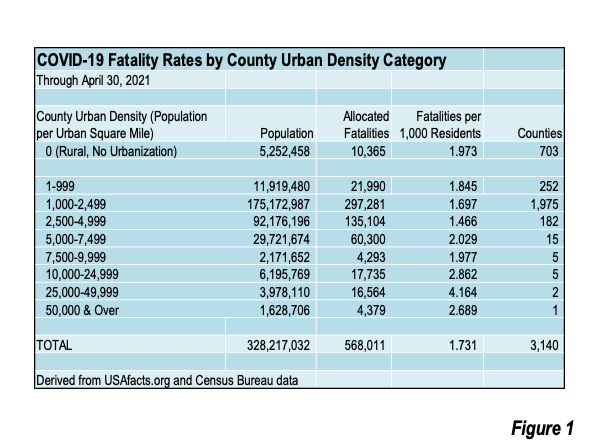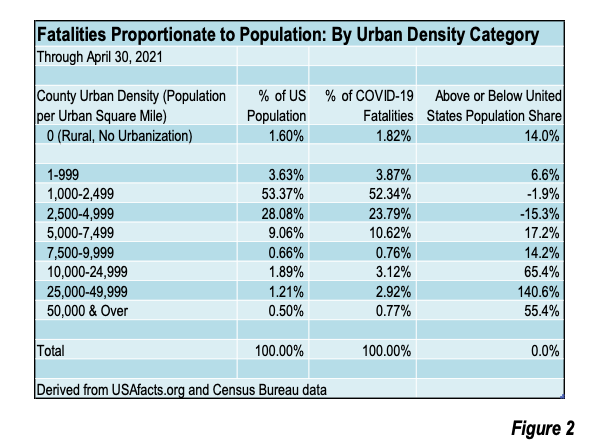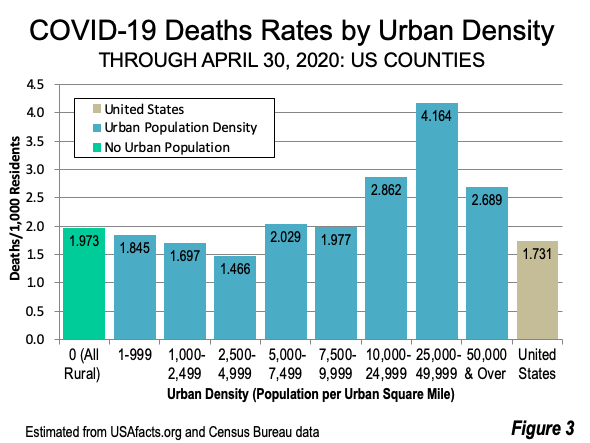The latest death rates as of April 30, 2021 from COVID-19 are displayed by US county urban density in Figure 1. This analysis is based on data reported by usafacts.org.

Death rates remain at or below the national death rate in counties with urban densities of 1,000 to 5,000 per square mile or below (Figure 2). These counties have the low to medium urban population densities characteristic suburban areas and account for 81% of the nation’s population (267 million out of a total population of 328 million).

All categories of counties with urban densities exceeding 5,000 per square mile have more than their population proportionate share of COVID-19 deaths. Figure 3 illustrates the fatality rates by urban population density category.

Despite considerable press coverage of fatality rates in rural areas, the fully rural counties (without urban areas), death rate remains 14% above the national average, virtually the same as at the end of 2020.
Higher COVID-19 death rates are associated with higher urban densities with their widespread overcrowding, especially in insufficiently ventilated, overcrowded enclosures, such as in offices, elevators, transit, retail establishments and housing. This leads to higher exposure densities, because the intensity and duration of risky contacts is likely to be greater. Economic activity in the nation’s largest and densest urban cores (central business districts) is a small fraction of normal, as a result of strict lockdowns.
Wendell Cox is principal of Demographia, an international public policy firm located in the St. Louis metropolitan area. He is a founding senior fellow at the Urban Reform Institute, Houston, a Senior Fellow with the Frontier Centre for Public Policy in Winnipeg and a member of the Advisory Board of the Center for Demographics and Policy at Chapman University in Orange, California. He has served as a visiting professor at the Conservatoire National des Arts et Metiers in Paris. His principal interests are economics, poverty alleviation, demographics, urban policy and transport. He is co-author of the annual Demographia International Housing Affordability Survey and author of Demographia World Urban Areas.
Mayor Tom Bradley appointed him to three terms on the Los Angeles County Transportation Commission (1977-1985) and Speaker of the House Newt Gingrich appointed him to the Amtrak Reform Council, to complete the unexpired term of New Jersey Governor Christine Todd Whitman (1999-2002). He is author of War on the Dream: How Anti-Sprawl Policy Threatens the Quality of Life and Toward More Prosperous Cities: A Framing Essay on Urban Areas, Transport, Planning and the Dimensions of Sustainability.












